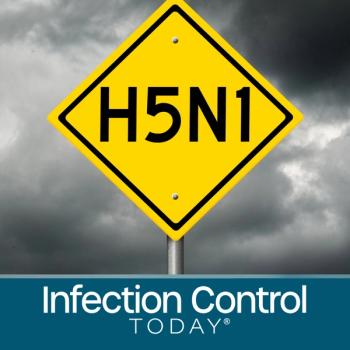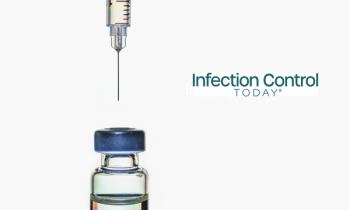
Evidence Continues to Link ACE Inhibitors to Severe COVID-19 Symptoms
ACE inhibitors up regulate (increase) the ACE2 receptor. This is the receptor the COVID-19 virus uses to attack the lungs.
Updated March 31, 2020
Why is hypertension appearing to be a primary driver of COVID-19?
The incidence of hypertension is noticeably high in patients with COVID-19 and the high degree of targeting of older individuals is very unusual. A recent study by the US Centers for Disease Control and Prevention regarding the Kirkland Nursing home observed: “The most common chronic underlying conditions among facility residents were hypertension (69.1%), cardiac disease (56.8%), renal disease (43.2%), diabetes (37.0%), obesity (33.3%), and pulmonary disease (32.1%).”1
Thus, hypertension may be a primary risk factor and driver of the severe symptoms of COVID-19. The ACE2 Receptor is used by the coronavirus (SARS-CoV-2) to enter cells. A protease, TMPRSS2, is also required to prime the virus for cellular entry. Data suggests that serum of patients which have recovered from infection blocks this entry mechanism.2
In a recent blog, the director of the National Institutes of Health, Francis S. Collins, stated:“The genomic data of the new coronavirus responsible for COVID-19 show that its spike protein contains some unique adaptations. One of these adaptations provides special ability of this coronavirus to bind to a specific protein on human cells called angiotensin converting enzyme (ACE2).”3
Other researchers have observed that lisinopril and losartan can increase (or upregulate) the ACE2 Receptor mRNA cellular expression by five and three-fold, respectively.4 This has given rise to concerns that these inhibitors may increase ACE2 Receptor cellular surface expression leading to exacerbated viral load in cells.
There has been at least 1 review article which discusses this concern which recommended staying the course with ACE inhibitor therapy of hypertension, since it has also been observed to be protective of pulmonary damage in mice.5 The authors also appear to have a large number of declared conflicts-of-Interest with the drug industry. The laboratory research in mice used losartan (angiotensin II receptor antagonist) with an acute exposure not specified, and may not be adequate time for upregulation of ACE-2 receptor.6 In a prior publication, only a 30 minute pre-treatment of the inhibitor was used and the effect on ACE-2 receptor expression is unknown and therefore long-term viral effect on the lung cannot be determined.7
There is mounting consensus that ACE inhibitors may be a primary driver of the severe symptoms. The concerns have been raised in the Lancet8 and most recently in Medscape.9
If this is all true, then we may have identified how to mitigate the major pathology in COVID-19 and (similar to Tamiflu) have a mechanism of researching an exciting new therapy for this disease. Already, there is current research on Recombinant Human Angiotensin-converting Enzyme 2 at Clinicaltrials.gov #NCT04287686 and a blocker of TMPRSS2, camostat mesylate, has been approved for human use in Japan for another indication.2
(Acknowledgement: Lindsay E. Calderon, PhD, MPH, Eastern Kentucky University, was a co-author on this update and responsible for research analysis.)
References:
(1) https://assets.documentcloud.org/documents/6812675/CDC-Life-Care-Center-of-Kirkland.pdf
(2) Hoffmann M, Kleine-Weber H, Schroeder S, et al. SARS-CoV-2 Cell Entry Depends on ACE2 and TMPRSS2 and Is Blocked by a Clinically Proven Protease Inhibitor. Cel. Mar. 4, 2020 [Online ahead of print] https://linkinghub.elsevier.com/retrieve/pii/S0092-8674(20)30229-4
(3) Collins, F. Genomic Study Points to Natural Origin of COVID-19. NIH Director’s Blog. Mar. 26, 2020. https://directorsblog.nih.gov/2020/03/26/genomic-research-points-to-natural-origin-of-covid-19/
(4) Re: Preventing a covid-19 pandemic: ACE inhibitors as a potential risk factor for fatal Covid-19. BMJ. Feb. 28, 2020. Vol. 368. https://www.bmj.com/content/368/bmj.m810/rr-2
(5) Kuster GM, Pfister O, Burkard, T, et al. SARS-CoV2: should inhibitors of the renin–angiotensin systembe withdrawn in patients with COVID-19? European Heart Journal. 2020. 0:1–3. https://academic.oup.com/eurheartj/advance-article/doi/10.1093/eurheartj/ehaa235/5810479
(6) Kuba K., Imai Y, Rao S. et al. A crucial role of angiotensin converting enzyme 2 (ACE2) in SARS coronavirus–induced lung injury. Nature Medicine. Aug. 2005. 11(8):875-879. https://www.ncbi.nlm.nih.gov/pmc/articles/PMC7095783/pdf/41591_2005_Article_BFnm1267.pdf
(7) Imai Y, Kuba K, Rao S, et al. Angiotensin-converting enzyme 2 protects from severe acute lung failure. Nature. July 7, 2005. 436:112-116. https://www.ncbi.nlm.nih.gov/pmc/articles/PMC7094998/
(8) Fang L, Karakiulakis G, Roth M. Are patients with hypertension and diabetes mellitus at increased risk for COVID-19 infection? The Lancet Respiratory Medicine. March 11, 2020. https://www.thelancet.com/journals/lanres/article/PIIS2213-2600(20)30116-8/fulltext
(9) Hughes S. COVID-19 and Angiotensin Drugs: Help or Harm?. Medscape. March 25, 2020. https://www.medscape.com/viewarticle/927542
Newsletter
Stay prepared and protected with Infection Control Today's newsletter, delivering essential updates, best practices, and expert insights for infection preventionists.






